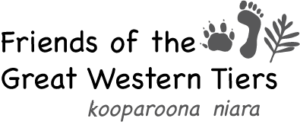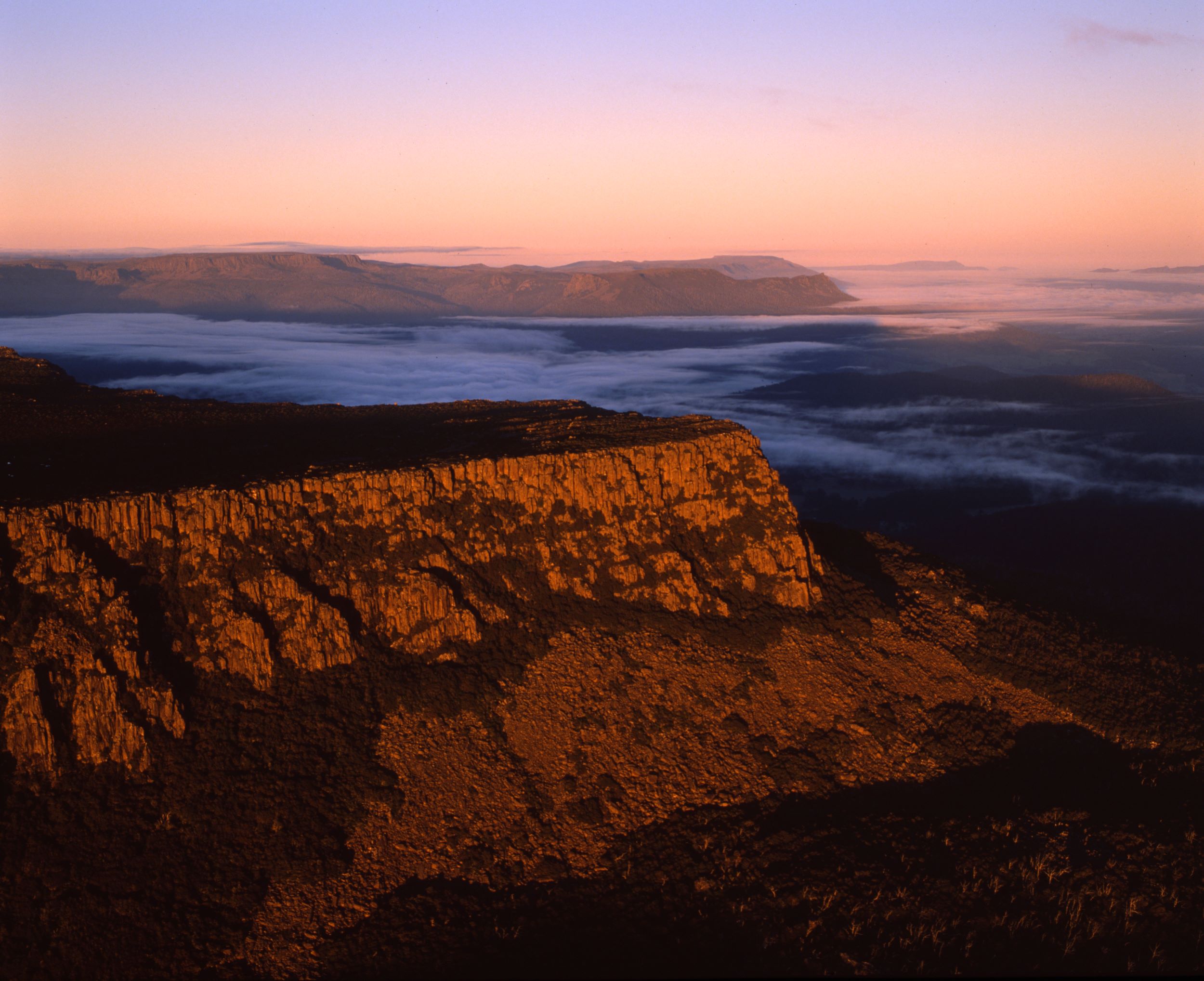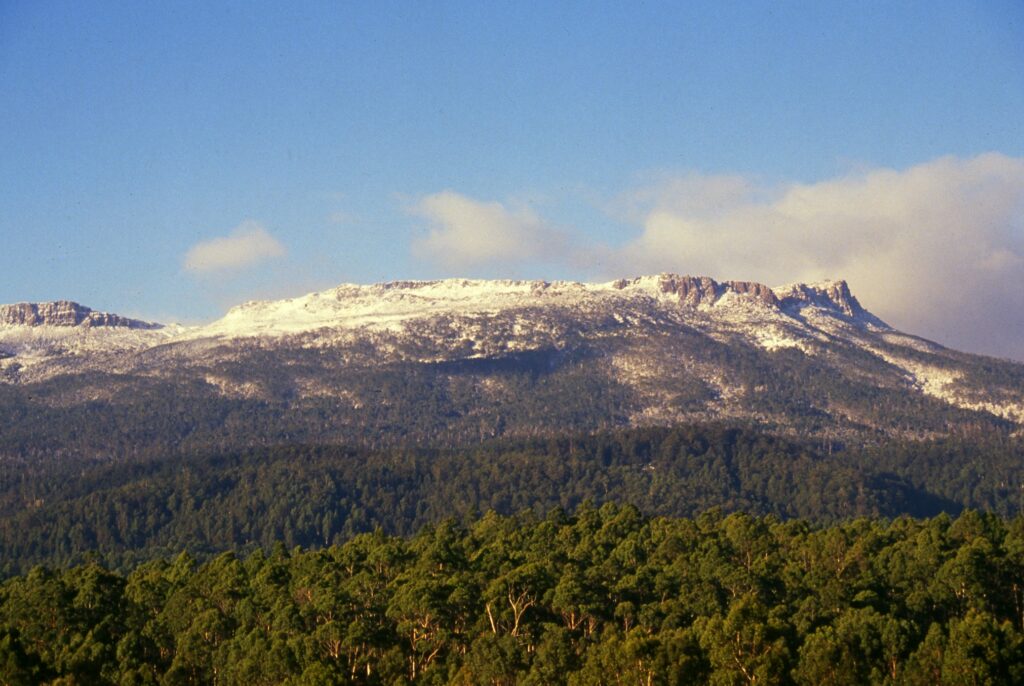Home
Looking west over Projection Bluff
Sarah Lloyd’s beautifully written and illustrated book The Edge,
about the birds, animals, plants, fungi and insects of Tasmania’s Great Western Tiers
can be read online here.
More beautiful photographs of the area can be viewed in the Gallery
We acknowledge and pay respect to the Palawa, the original and continuing custodians of lutruwita (Tasmania),
and pay respect to the Elders past and present.
The present-day Aboriginal community has strong cultural links with the Great Western Tiers landscape,
giving it the name kooparoona niara – the Mountains of the Spirits.
kooparoona niara (Great Western Tiers) includes the imposing northern and eastern escarpment of the extensive Central Plateau of Tasmania. The area is usually taken to include both adjoining parts of the plateau (especially the part readily accessible by day walks) and the forested lower slopes, which are mostly in public ownership – with high conservation values.
The First Peoples of lutruwita (Tasmania) have inhabited and moved through the area for many thousands of years.
The area is rich in globally significant Aboriginal heritage.
The Tasmanian Aboriginal community has formally requested that the Tasmanian government hand back significant parts as an Aboriginal owned and managed national park. Our group supports this aspiration.
The natural conservation values of the area are described in some detail here.
After many years of campaigning by conservationists to end logging, most of the area has been given World Heritage status as part of the Tasmanian Wilderness World Heritage Area. The Mole Creek Karst National Park has been created on the western end. However, while protected under the IUCN World Heritage conventions, most of kooparoona niara remains in inappropriate tenures under Tasmanian law. Some important areas of karst and forest remain inadequately protected. The conservation status is further discussed here.
The World Heritage status of the Tasmanian Wilderness World Heritage Area is described here.
Western Bluff – cave country
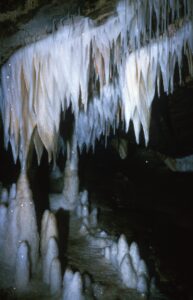
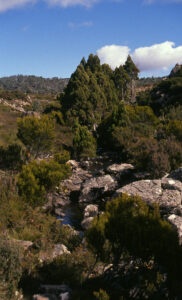
Proposal for an Aboriginal owned and managed National Park:
Empowerment…Land Justice…
The Aboriginal Lands Council of Tasmania (ALCT) has formally requested the State Government to create Tasmania’s first Aboriginal owned and managed national park on kooparoona niara. Friends of the Great Western Tiers kooparoona niara supports this proposal. Further, our group recognises and supports the local Aboriginal community’s need to have a determining role in any developments.
The ALCT submission and media release can be viewed here:
Aboriginal Lands Council submission 2021
Aboriginal Lands Council media release 2021
ABC Radio interviews with Rebecca Digney and Darlene Mansell can be heard here:
The conservation groups’ supporting media release can be viewed here:
Conservation groups support ALCT submission
Landmark Report by Prof Kate Warner, Prof Tim McCormack and Ms Fauve Kurnadi:
This report was commissioned by Premier Gutwein and involved extensive conservation with Aboriginal people throughout Tasmania. Of particular interest for kooparoona niara is Recommendation 12: Creation of the kooparoona niara Aboriginal Protected Area
Together with the enabling legislation, the first Aboriginal Protected Area, the kooparoona niara Aboriginal Protected Area in the Western Tiers including the FPPFL on the boundary of the TWWHA should be declared. If the land (boundaries to be determined) was vested in ALCT, there could be conditions relating to joint management with the local Aboriginal community in the management plans for the park. This first Aboriginal Protected Area could serve as a model and would serve as a test of local management and access. We believe that the proposal for the kooparoona niara Aboriginal Protected Area would have considerable support from the wider community. For example, we were contacted by the Friends of the Great Western Tiers / kooparoona niara, who wrote to us to support such a proposal:
We are writing in support of the Aboriginal community’s claim for an Aboriginal owned and managed national park in kooparoona niara / Great Western Tiers, as a significant contribution to much needed Land Justice and as a source of empowerment for the Aboriginal community. It will also be of benefit to the non- Aboriginal community through the increased tourist visitation that such a national park would attract.
Recommendation 11 on page 76 describes the Aboriginal Protected Area concept.
These recommendations are welcome.
The full report can be accessed here.
It should be noted that in 1997 the Deloraine Aboriginal Cultural Centre prepared a proposal for an Aboriginal national park titled: Kooparoona Niara National Park proposal “A time for change” . This document is listed in the AIATSIS Mura Collections Catalogue, closed access.
This website was last updated in February 2025
